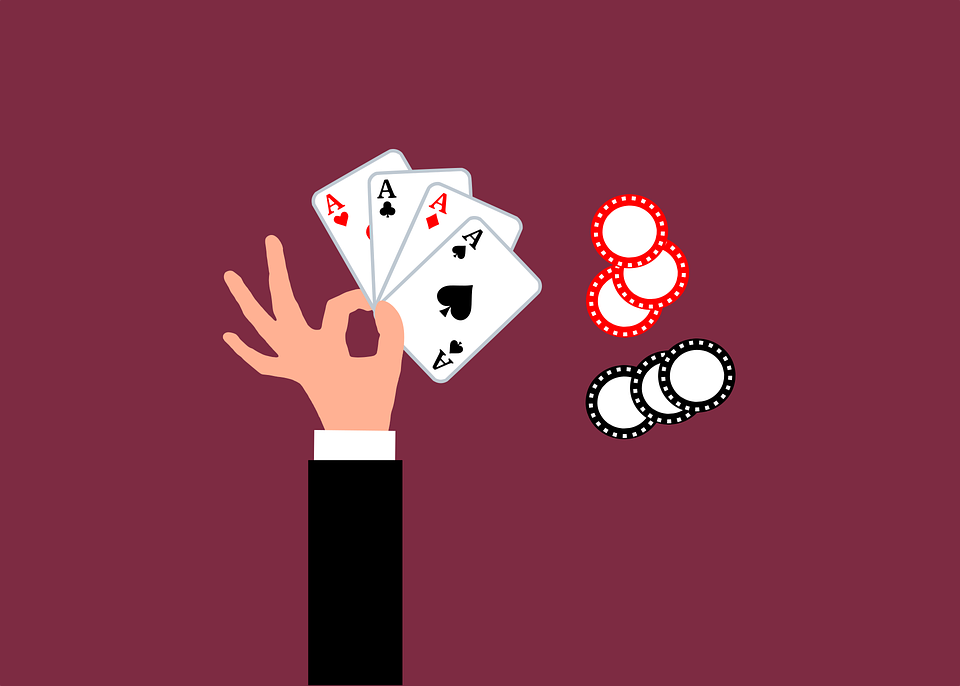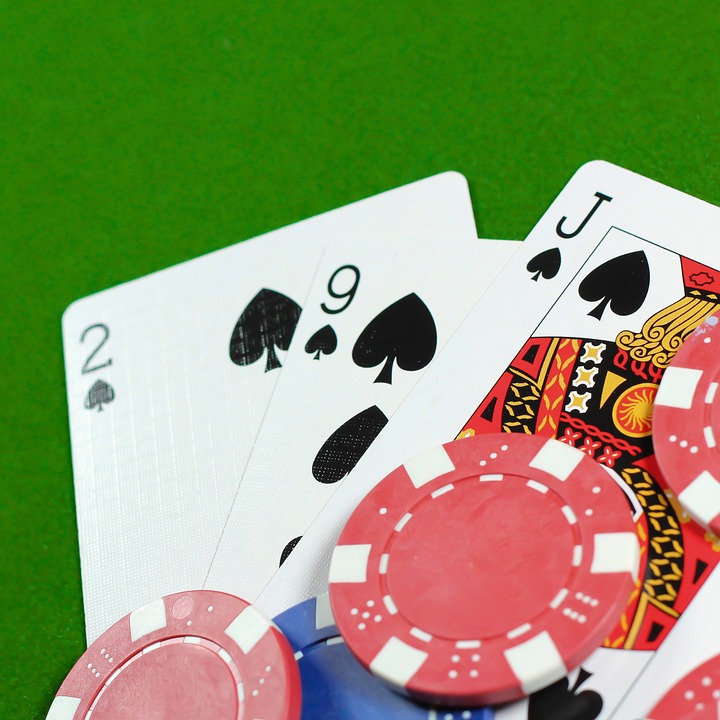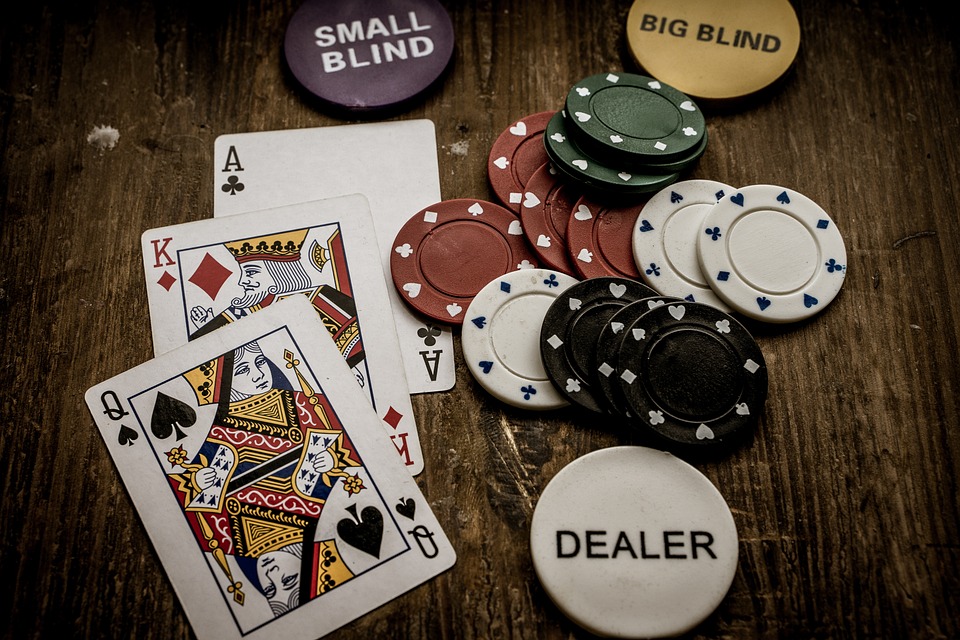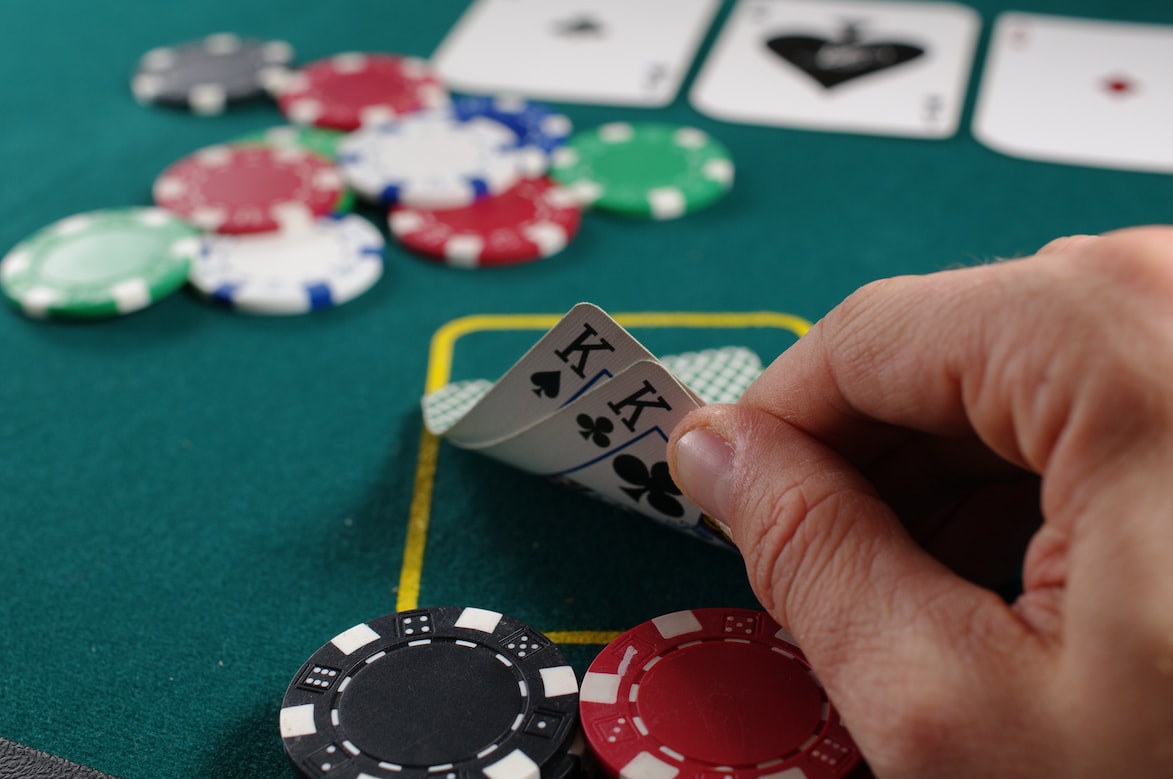The post Are You Anxious About Playing Poker? Find Out if You Have Poker FOMO! appeared first on Championnat-De-Poker.
]]>Although the phrase “fear of missing out” might seem harmless and helpful, it causes anxiety and can originate from concerns like not being chosen for a team or feeling nervous about a poker opponent’s successes. It could also apply to the stress of securing a spot on a popular online poker website.
As a result, FOMO can lead to various psychological distresses, including tilt. Therefore, it is essential to explore the origins of the fear of missing out and determine when it becomes concerning for its impact.

Where Does FOMO Come From?
FOMO, which stands for Fear of Missing Out, originated in a 2004 op-ed piece published by The Harbus – the magazine of Harvard Business School. Since then, it has become popular and was even added to the Oxford Dictionary in 2013.
The enduring popularity of FOMO suggests that it will continue to be relevant in the future. Initially, FOMO was associated with the anxiety caused by constantly checking social media updates. People experiencing Fear of Missing Out (FOMO) must keep themselves informed and ensure they don’t miss out on essential updates regarding different topics.
This can be dangerous, as those with minority opinions may face severe consequences on social media platforms like Twitter or Facebook, which can further lead to real-life situations such as job loss, qualifications revocation, and even physical assault.
Over the years, FOMO has expanded its scope to cover various areas of human behavior, such as obsessive behavior on social media, financial trading, and even poker tilt from the anxiety and frustration of not being able to keep up with the latest trends and games.
The common thread linking these activities is their development and growth through internet technology. With internet access being more widespread on different devices, it’s no wonder many people have been impacted by FOMO-related discomforts regarding poker and poker hands.
When Do We Experience FOMO?
Do you ever feel like you’re missing out when relaxing at home in your pajamas or enjoying a good book or movie after a long day? That feeling might arise when you receive a text from one of your friends.
When your finger pushes the dreaded button, a wild house party appears on-screen with loud music and friends laughing uproariously. Suddenly, you realize that not going out tonight was an epic mistake; why did you think it would be enough to stay home? Fear of making the wrong decision can be daunting. The terrible decision settles in like a heavy blanket, leaving your best-case scenario far behind.

Discovering How FOMO Impacts Poker Games
It’s important to understand that FOMO is not a new phenomenon. It’s an instinct that humans have always had. Our survival as a species depends on our social connections, so being included in the group could pose a risk throughout history.
Experiencing these feelings can have physical effects, such as butterflies in the stomach and a racing heartbeat. FOMO, or the fear of missing out, can lead you to play hands that you should fold before seeing the flop.
This fear does not come from an external threat but can still affect your brain and decision-making process. Although some professional players may be able to profit in the long run with sure hands in early position, such as suited one- or two-gappers, most players cannot.
If you need help making decisions when you’re not in a favorable position, you may be widening your range of starting hands too much because of FOMO. Ask yourself if you’re losing money by hoping for lucky cards or overreacting to a random player winning big with a terrible starting hand.
Playing casino games can lead to FOMO, which doesn’t necessarily mean you have a gambling problem. However, it’s essential to be cautious and avoid a potential poker tilt. We tend to stay at table games longer than necessary to exploit profitable opportunities.

But it’s important to exercise caution and not let this behavior become unreasonable, as it may lead to problems later. When playing poker online and live, we must remind ourselves that our minds don’t automatically adjust to the game’s requirements.
Our minds need help grasping the game’s intricacies because our usual pattern recognition abilities, which help us recognize an opponent tell or classify a gambler as passive or daring, are not applicable here. Our brains are programmed to realize that even with a bad hand, we may still get lucky and win something on the flop.
The fear of missing out (FOMO) can be triggered when you feel like investing will make you miss out on something. This may lead you to bet more than you should on a bad hand. Unfortunately, some people don’t take responsibility for their FOMO decisions. Surprisingly, some feel relieved after taking the risk, regardless of whether it succeeds or fails.
Conclusion
Poker FOMO is an increasing issue in the poker community and can severely impact bankrolls and players’ mental health. Although feeling FOMO can be uncomfortable, it’s important to remember that missing out on big pots or tournaments won’t ruin your career as a poker player.
Learning how to play smarter, implementing sound bankroll management strategies, and having the discipline to stick to them will make all the difference. With this knowledge, you will be able to take advantage of opportunities presented while avoiding costly mistakes from inappropriate actions influenced by rush decisions made in the heat of the moment due to FOMO.
For those who strive for success in poker and improve their poker strategy, understanding your inner state and eliminating FOMO should be part of your path forward.
You can become a skilled and successful professional poker player by understanding what triggers poker-related FOMO and taking steps to counter its effects. So next time you feel the FOMO, remember: to step back, take a deep breath, and think about what you’re doing before you put your money at risk.
The post Are You Anxious About Playing Poker? Find Out if You Have Poker FOMO! appeared first on Championnat-De-Poker.
]]>The post Want to Pepper Interest in Your Home Games? Introducing Mixed Games Poker — The Spice You Need! appeared first on Championnat-De-Poker.
]]>Unlike the somewhat repetitive nature of poker, mixed games introduce a new world of exciting experiences that are enjoyable to explore. However, it can be overwhelming at first due to their unique formats. That’s why we have designed a guide to assist you in getting started with mixed games.

What Are Mixed Poker Games?
Mixed poker games involve multiple variations of poker combined into one game, sometimes up to ten. The games rotate from one type to the next, such as moving from Hold’ em to Omaha. The rotation speed differs based on the house rules and whether playing cash games or tournaments.
Two common ways to rotate games in a tournament are using levels/blinds or the number of hands played. With levels/blinds, a new game is played every 3-60 minutes when the blinds increase. With several hands, a new game is played after a predetermined amount of hands, such as every nine hands in a full-ring cash game.
Strategies to Consider
To avoid drawing the short stick during a good poker game, you must learn the basic strategies of each game you play. Even if you can only become an expert at some games, knowing these basics will prevent your opponents from taking advantage of gaps in your knowledge.
For example, in 2-7 Triple Draw, it’s advisable to avoid playing hands that don’t include a 2, and in high-low games, aiming for a low hand can be more beneficial since it can potentially win in two ways.
Knowing even the most basic strategies can give you a significant advantage over someone who knows nothing about the game in every game. Learning these winning strategies for any game you plan on playing is relatively easy.
Even for the most obscure matches, there are strategy books available. You can search for relevant articles or chapters within books if they are not available. Additionally, there are numerous instructional videos and strategy articles for most games, including poker and poker cards.

Finding a game that includes all the specific games you are looking for may be challenging. Suppose you discover a $10/$20 B.O.T.E. game that offers Omaha, triple draw, and stud hi/lo, but you have no prior knowledge of badugi. In this scenario, you might take a break when the game changes to badugi by pretending to go to the restroom.
Skipping one round in a mixed game is generally not recommended. If you join a mixed game, make sure you are willing to play all the games involved. However, from an ethical perspective, missing one orbit of a game is not a serious offense. Consider how frequently players step away from the table during a regular Hold’ em or Omaha cash game. If the game changes only when the dealer pushes or every two orbits in mixed games, it’s challenging to skip an entire game. It’s unfair to your opponents, and it’s hard to justify being away from the table for a long time.
Furthermore, it can be advantageous to try playing a game you are less familiar with or not as good at. While reading books or watching online training videos can help enhance your skills, the key to becoming proficient is through practice. The most effective way to improve is by gaining experience playing the game.
Instead of trying to become an expert in every poker variation, focus on a few games that you enjoy and are good at. Play those games more aggressively and take advantage of your opponents’ weaker skills in those games. Remember, it’s impossible to master every variation, so focus on what you do best.
If you need to be more skilled in certain games, it’s better to play cautiously and aim to lose money in cash games, at least not getting eliminated in tournaments. However, it would be best if you eventually worked on improving your skills in those weak games. Otherwise, you will always be a target whenever those games are played.

To improve your game, observe your opponents to identify their weaknesses. Please note which games they make the most mistakes playing or play fewer hands. This information can guide you to play more aggressively or steal their blinds and antes. Remember, every game is a chance to learn, and winning isn’t always necessary to benefit from a mixed poker game.
What are the recommended things to take notes on during gameplay? Take note of your opponents’ most substantial and weakest games and any opportunity you can use to your advantage in the future. Write down your best and worst games in that rotation. If you encounter hands you need clarification on, jot them down so you can discuss them with your peers or in a strategy forum later. Also, note the poker hands you want to review using tools such as a hand replayer and odds calculator.
Focus on taking high-quality notes to improve your performance and avoid losing money in mixed poker games. These notes can help you identify your weakest areas, which you can then work on strengthening. This tip applies to all types of poker games, not just mixed formats.
Final Thoughts
Mixed games are an enjoyable way to challenge your skill and luck in poker. Whether you’re an experienced pro or new to the game, it pays to practice these strategies and learn to adapt to each game type. Playing mixed games requires knowledge of different formats, but with some experience, you can soon become a master at this enjoyable variation.
Knowing when to play sure hands and when to take risks is critical. Ultimately, understanding the differences between the various types of card games available within the mixed game will significantly improve your odds of success and greatly improve your poker strategy. So be sure to put in the time, practice, and refine your skillset, and good luck!
The post Want to Pepper Interest in Your Home Games? Introducing Mixed Games Poker — The Spice You Need! appeared first on Championnat-De-Poker.
]]>The post When to Fire Double Barreling in Poker Games appeared first on Championnat-De-Poker.
]]>That’s why you must understand when and how to execute a double barrel effectively. In this article, we’ll dive into the double barrel strategy, covering the best situations to use it. Get ready to elevate your game and keep your opponents guessing with the power of the double barrel.

Basics of Double Barreling
It may seem enjoyable to continually bet against an opponent who frequently calls, but remember that trying to bluff players who rarely fold can be bad for your bankroll. It’s helpful to consider your opponent’s tendencies, such as if they like to continue with weaker hands or aim to reach showdowns often.
The more information you have about your opponent, the easier it is to decide if a second bet is wise. If you choose to go for a second bet, it should be a bluff or semi-bluff intended to win the pot immediately. To minimize the damage if your double barrel fails, it’s advisable to have a hand with some chance of winning on a lucky river card.
Typically, when making a continuation bet on the flop with a hand, it’s common to follow up with a second bet on the turn if you have at least one overcard. Having just one overcard is the minimum amount of equity required for a successful second bet.
Only bet on the turn if there’s a chance you could win the hand if called, and the more equity you have, the better. This is applicable in most bluffing scenarios. The turn card should improve your hand rather than just carrying on with a semi-bluff from the continuation bet. This is for maintaining balance in your strategy and avoiding predictability.
Look at the Board Texture
Paying attention to the board’s texture when playing poker is essential. You may start with general rules-of-thumb, such as bluffing with a draw or value betting with two-pair. Then, learning to consider how your range interacts with the board texture will become critical when deciding whether to double barrel or not.
For example,
The board shows (Ks 8h 8c) 3d. Suppose you have a rule for bluffing on the turn, including open-ended straight draws, gutshots, and flush draws. However, you can’t bluff on this particular board because there are no such draws.
Instead, you have a range of strong hands, including Kx, 8x, and AA, that you want to value bet, but you need to balance them with bluffing hands. You should aim for a 50/50 split between value and bluffs. However, achieving that on a board with no draws is challenging.
In such situations, you must expand your rule to include other hands with relatively good equity or blockers against the opponent’s calling range. For example, hands like QJ, JT, J9, T9, and T7s would be suitable on this board as they don’t have much equity but can block your opponent’s strongest hands.

Must Have Bluff and Value Hands
Mix bluffs and value poker hands when employing double barrel tactics to vary your poker strategies. Aiming for a 50/50 balance between the two is recommended rather than relying solely on one or the other.
This approach can be particularly effective when using a pot-sized bet of around 75%, as it puts pressure on opponents holding weak hands. If using a larger bet, it may be possible to increase the frequency of double barrels, while smaller bets may require a greater emphasis on value hands to avoid being called too often.
Against Loose/ Passive Opponents
Using big bluffs against tight players at the poker table is not advisable, as they are more likely to call all the way through, and it can be costly. Instead, it’s better to target players who are loose pre-flop and play passively, as they have a wider range of hands and are more vulnerable to aggressive play.
By using second barrels against these players, you can punish them for calling too often and potentially win the hand. However, caution should be exercised against “calling stations,” who habitually call with weak hands. While bluffing them is possible, it requires careful timing, believability, and potentially three substantial bets. Overall, it’s usually more profitable to wait for a strong hand and let loose/passive players pay you off.

Turn is Bad for Opponent’s Range
The turn card must be unfavorable to your opponent’s range of hands to make a second barrel effective in poker. This makes them less confident about continuing to invest money in the pot.
One ideal scenario for a second barrel is when the turn card reveals overcards to the board, which demotes your opponent’s pair to a weaker one. Possible opportunities for a straight or flush can also be good candidates for a second barrel. While there is a chance that your opponent may be drawing to a flush, they will often hold a weak pair and may fold to well-timed aggression on a threatening board.
When Not to Double Barrel
There are certain circumstances in poker where using the double barrel strategy is not advisable. For example, if you have low-value cards and the flop reveals high-value cards like a jack, king, and ace, it’s best to fold as there’s a high chance an opponent has a strong pair.
Additionally, if someone has already raised during the pre-flop, it’s better to check and avoid attracting attention. Being too aggressive in this situation can make it harder to bluff or keep other players active in the round, especially when all eyes are on you.
Maintain spontaneity in your gameplay, so avoiding using this poker strategy too frequently in a short time is recommended, as opponents may pick up on your playing style.
Conclusion
Double barreling is a powerful poker strategy that can be used to put pressure on opponents and win pots. It’s essential to employ double barrel tactics at the right time, such as when the turn card is unfavorable for your opponent’s range of hands. Additionally, using a mix of bluffs and value hands in your double barrel approach is recommended, with an ideal balance of around 50/50.
Players should also be cautious when targeting tight or calling station opponents and wait for a strong hand when it makes more sense to let opponents pay you off. By considering these factors and using double barrel tactics wisely, players can increase their chances of success in poker games.
The post When to Fire Double Barreling in Poker Games appeared first on Championnat-De-Poker.
]]>The post Defense Against Donk Bets in Poker Games appeared first on Championnat-De-Poker.
]]>Fortunately, there are ways to defend against donks and minimize their effectiveness. In this article, we’ll explore some strategies for defending against donk bets at the poker table so that you can protect your stacks and even exploit these players.

What Is a Donk Bet?
A donk bet is a term used in poker to describe a post-flop bet that seems illogical and is typically made by less skilled players (hence the name donk). It often indicates that the player has a strong hand.
To illustrate, imagine a scenario where a player raises before the flop and is called by two others. Following the flop, a player who is out of position and not expected to bet bets half of the pot without waiting for the person in position to place a continuation bet (which is what a skilled player would usually do).
Are Donk Bets Acceptable as a Good Strategy?
In contemporary times, several highly regarded poker professionals use donk betting from time to time during their games. However, the key is sparingly using this poker strategy to bewilder opponents and keep them guessing.
Donk betting can be advantageous in certain situations, such as when a card favors your hand. It can also be used effectively in low to medium-dynamic flop scenarios where several turn cards could change the balance of power, and you want to prevent your opponent from taking a free card.
Additionally, it enables you to dictate the price of your vulnerable hands and draws. Nonetheless, many experienced players advocate against donk betting unless you are confident executing it correctly.

Defense Against Donk Bets
While not as prevalent in online poker, donk bets are still quite common in live cash games. It is crucial to exercise caution when faced with a donk bet and attempt to identify the types of hands your opponent might be using this strategy with.
It is generally best to fold your hand if you have missed the board entirely and are confronted with a donk bet on one of the mid to low-connected boards. Your opponent will likely have more strong hands than bluffs, and even some of their bluffs could still have a good chance of beating you.
It is important to consider that inexperienced players may feel uncomfortable making a donk bet with their strongest hands, such as two pairs or sets, which can result in an unbalanced range.
If an inexperienced player ever donk bets, it indicates a hand such as a flush draw with an overcard, one pair with a gutshot straight draw, and so on. A sizable raise can be effective against these hands, as they are unlikely to handle the pressure of a large raise that implies you have a strong hand. Even if they opt to continue, they will do so against the odds, resulting in long-term profitability.
While board texture plays a significant role in determining your course of action, making a substantial raise on these boards with hands, such as flush draws or straight draws with overcards, can be highly lucrative. Even a strong hand like top pair with a weak kicker can be forced to fold when faced with a big raise on a 9-high board.
Once you’ve identified players who like to donk bet with mediocre hands on the flop, you can take advantage of them for many hands to come as long as you keep your bluffs concealed.
When facing opponents who only lead with premium hands, it’s best to call with hands with sufficient equity to continue, such as draws, and fold all other weak hands.

Why Shouldn’t You Donk Bet?
It Gives Opponents More Information About Your Hands
When you employ a donk bet strategy on the flop, it hinders you from gaining additional knowledge about your opponent’s range while allowing them to learn more about your hand.
When you check your entire range on the flop, you avoid providing any new information to your opponent. This allows you to observe their actions and determine the strength of their potential holding.
On the other hand, if you decide to execute a donk bet, you divulge some information about your hand, and at the same time, you prevent your opponent from carrying out their intended strategy.
You’ll Appear Weak
When players frequently donk bet their powerful hands and draws, it creates a problem for their overall defensive range. By using this strategy too often, players risk making all their checked hands appear weak, leaving them vulnerable to attentive opponents.
In online poker, opponents can track a player’s moves using poker tracking software, which means they can identify the frequency at which a player donk bets. This makes the player’s strategy vulnerable to big continuation bets and turn barrels.
As a result, players need to perfectly balance their donk betting range, which is challenging and performed by only a few skilled players.
Check-Raising Is a Better Option
Check-raising offers several advantages over donk-betting. If the player in position bets, you can act last on the flop, which provides more insight into their range. Additionally, you can gain extra chips when your opponent bluffs and bets into your check-raise.
Raising can deny your opponent the chance to improve their hand and fold their equity, thus increasing your chances of winning. This move can also prevent your opponent from exploiting your checking range with overbets by making them reconsider betting big against you.
Conclusion
While donk betting may be viable in certain scenarios, it can often be considered weak and too easily exploitable. If you notice your opponents donk bet more often, make a read on their hands to understand if you should raise, call, or fold. Learning how to defend against a donk bet is one of many poker skills experienced players can take advantage of against frequent donk bettors or inexperienced players.
The post Defense Against Donk Bets in Poker Games appeared first on Championnat-De-Poker.
]]>The post Want to Improve Your Poker Strategy? Here’s a Quick Guide to Backing in Poker appeared first on Championnat-De-Poker.
]]>As a result, some of the most successful players have quickly climbed up the ranks thanks to these deals. Even though they come with significant risks for both parties involved, such partnerships often generate substantial profits in the long run. Let us delve into how exactly poker staking arrangements work

What is Staking in Poker?
Regarding early staking deals, the player receives money to partake in different games that are either their preference or suggested by their backer. It is akin to what angel investors do when they place capital into a venture with high expectations of returns.
Except for this time, instead of investing in an organization, the stakeholder is putting funds toward an individual poker player’s success and potential winnings. Formerly, these types of agreements were sealed through a handshake between two parties – professional players offering support for each other or entrepreneurs sponsoring up-and-coming stars.
In the modern online poker guide universe, trust is still necessary for deals. But now it’s a bit more sophisticated. Players sign contracts that define all terms of an agreement before playing – from timeframes and specific games to staking taxes and markups. These safeguards are integral since backers typically need to learn from each other better in advance!
With the advent of dedicated staking sites, it has become easier for individuals to find investors and get funding in poker. Despite this development, however, risks have also increased. As such, contracts are now commonplace when agreeing with a backer – allowing them to exercise more control over their “horse’s” activities at the felt.
What Happens if a Staked Player Loses?
Consider a situation in which an individual is backed with $100,000 and enters multiple tournaments. Despite spending $30,000 on tournament buy-ins, the player manages to win one for $20,000 – yet they still have a debt of $10,000 outstanding. This money owed is referred to as “makeup” and must be repaid before any share of profits.
Instead of sharing the $20,000 win with their backer, a player must pay back the entire sum. While an investor might allow them to keep some money for living expenses, they must still give up most of this profit to reimburse their makeup costs.
The makeup factor is where staking deals can be a dicey situation for both parties involved. If the player defaults on their payment, leaving an outstanding balance of $10,000, it creates a massive loss for the investor. Conversely, if the player has already lost $30k in one go during their initial staking deal – they’ll undoubtedly need help to profit from it going forward!

Types of Players You May Not Consider Backing
Frankly, there aren’t many exceptions to this rule, and players you can back profitably. However, let’s discuss some of the potential candidates.
Players who have had success with their bankroll for years but now must face an abundance of unexpected bills can be in a tricky situation. The issue here lies not in the truthfulness of what is happening.
While emergencies can arise, why were they not already equipped with the necessary funds? Not having the money makes me question their financial management skills, which backers need reassurance in when considering a business relationship.
It’s also worth noting that after an emergency occurs, there are often further expenses and complications to deal with. Because of this, some people’s policy policy has been strict: if someone appears desperate, some backers do not enter into any agreement due to their tendency for impulsive decisions and diminished ethical judgment caused by stress.
When a player is both emerging in poker, fresh with a poker guide, and an amateur in the game, it’s hard for me to trust that they will move up the stakes when taking a shot. Not only do high-stakes games usually get trickier as you go higher, but this also implies that there would be quite the learning curve along their journey – something some backers only want part of if they’re good friends.

Finally, some players have been backed for their careers because that’s what they’re most comfortable with. Typically, these individuals have won on every stake they’ve ever taken for various reasons; investors wanting to get out of backing, the player needing to move up stakes sooner than expected, or personal issues arising between them and their backers. The latter is somewhat unusual, mainly since a great relationship must be established for any type of backing agreement, and people tend to stay close when money is involved!
Cash Game Staking
You are trying to obtain funds to play higher stakes and reduce risk. Casino games and cash game staking typically do not include the usual 50/50 agreements.
For instance: you are a successful player at $5/$10 but want to attempt taking on $10/$20 for which an investor offers you a simple 50/50 split – although the stake is double that of before, half of all winnings will go straight away! In theory, this leaves no monetary gain whatsoever.
Moreover, $1/$2 games are more likely to be as tricky as ever. Therefore it doesn’t make sense for you to have a 50/50 deal with the same earning potential against experienced gamers. It’s much better to opt for a 25/75 split that works in your favor or decide on selling percentages. This way, you can manage how risky your moves will be and what rewards await – e.g., keeping 70% of all winnings after distributing 30% of the action elsewhere!
Wrap-Up
Utilizing backing in poker is a great way to maximize your potential to generate profits from the game, much more so than utilizing online poker tips yourself. While it does require an initial investment, well-backed players can play more aggressively and efficiently, increasing their chances for success.
Remember that this form of strategic approach may not be suitable for everyone, so always explore the best options and consider your long-term goals as a player before moving forward with any significant decision. With risk management firmly in place and a deep understanding of how to use backing effectively as part of a strategy, you’ll have the best chance at consistently generating profitable returns from poker games.
The post Want to Improve Your Poker Strategy? Here’s a Quick Guide to Backing in Poker appeared first on Championnat-De-Poker.
]]>The post Texas Holdem Strategies When Playing With Drawing Hands appeared first on Championnat-De-Poker.
]]>These kinds of hands can be incredibly challenging to play, especially if you have to choose whether or not to call when you are up against bets and raises. In this article, we’ll discuss some essential strategies for playing with drawing hands in Texas Holdem so that you can start getting more value out of every hand.

Not Every Drawing Card Is Created Equally
It is essential to recognize the difference between numerous draws you can hit on the flop or turn. Pursuing draws that leave you with the second-best hand might be costly.
Draw-related errors frequently include:
They are, of course, some general ideas. Since your opponent’s hand range makes it improbable that they will have a better hand when you get there, it often makes perfect sense to chase non-nut draws. When things get complicated, you should be highly cautious about chasing after a draw since it can be the second-best hand.
In a circumstance similar to a draw, you must also ensure that your direct or implied odds support making a call. Players frequently become overly attached to particular hands, such as an open-ended straight draw. Still, these are only worthwhile to pursue if your opponent offers you the correct odds and if they have enough chips left over that you can convince them to bet if you win.

Strategies for Your Drawing Hands
Play Aggressively
Instead of checking and calling, you can play Texas Holdem drawing hands aggressively by betting or raising. This may appear to go against the idea of constructing your hands as inexpensively as possible, but it has a lot of benefits that can help you make more with your hands.
This aggressive poker strategy best suits skilled players who can read their opponents and situations well. If you are unclear of what you are doing, dumping money into a pot without a made hand can become quite expensive. If you feel like trying the aggressive approach, you can stick to drawing hands that will offer you the nuts on completion.
In a semi-bluff, betting with a draw can be effective because you might win the pot immediately without finishing your hand. If your opponents call, though, you still have a chance to make your draw and win the pot by picking up the appropriate Texas Holdem cards.
To emphasize this point even more, betting out has the benefit of hiding your hand instead of checking and calling with a draw. If you bet or raise, your opponent is likely to assume that you already have a made hand and will find it more difficult to place you on a draw.
Additionally, betting with a draw increases the pot and can compel opponents to give you the right odds to call raises when they attempt to gain control of the hand. If your opponent decides to bet and raise with a strong yet weak holding, you will likely be handed the right odds to call as the pot size rises.

Consider Position in the Turn
The play of drawing hands on the flop in heads-up action is not greatly influenced by position; you simply play your hand aggressively. The turn is where position matters the most.
For example, if you didn’t hit your draw and a player checks to you on the turn after calling your bet on the flop. You have a few choices if you’re in position:
You can continue to project strength by firing a second barrel. This puts your opponent in a difficult spot because they must worry about another bet on the river.
Check behind to see the river card for free. If you are out of position, this move will not benefit you. Checking behind could initially appear weak, but a bet-check-bet pattern might be helpful if your opponent has ever witnessed you bet the flop, check the turn, and then bet the river with a powerful hand.
This betting strategy will make your drawing hands and powerful made hands identical, giving you an advantage.
Playing Out of Position
Playing drawing hands out of position limits your alternatives and might put you in uncomfortable situations (both on the turn and the river). Thus, it is typically less profitable. Nonetheless, playing aggressively is still essential despite this.
The main reason it’s less profitable is that you don’t have the option of checking behind and getting a free card if you don’t miss your draw on the turn. You will typically have to give up the hand if you check and your opponent bets the turn after sensing your vulnerability.
However, you can increase the number of times you shoot a second barrel, and when you’re out of position, be more cautious pre-flop, which means playing fewer drawing hands.
Remember, in the Texas Holdem poker game, position and aggression are the two most important factors in drawing hands success. Each feasible draw in heads-up play should be played aggressively. Your number of outs may fluctuate depending on the draw, but how you should play the hand doesn’t alter significantly.
Conclusion
The most crucial lesson in Texas Holdem poker is that you should constantly look for strategies to make draws work for you, whether in position or not. The safest strategy may be waiting for the appropriate card to fall before being aggressive, but it isn’t always the best.
The ability to increase aggression while knowing that you aren’t drawing dead gives good drawing hands a lot of strength. On the other hand, mediocre draws should be played more cautiously because they frequently land you in difficult spots.
The post Texas Holdem Strategies When Playing With Drawing Hands appeared first on Championnat-De-Poker.
]]>The post Poker Strategy: Balancing Your Range, Explained appeared first on Championnat-De-Poker.
]]>A question often asked by poker players is, “What is the best way to play?” Truth be told, there is no objectively correct way to play poker. It depends on many things, and you often see poker pros playing differently depending on who they’re up against or their position.
Still, a good foundation for developing your strategy is understanding the four main playstyles in poker. Of those four, only two are considered adequate: TAGs and LAGs. In this poker guide, we’ll go in-depth about these two playstyles, why they’re so good, and which one you should choose.

What do TAG and LAG mean?
TAG and LAG stand for tight-aggressive and loose-aggressive. These are two of the four primary poker playstyles. Playstyles get described as either tight or loose and either passive or aggressive.
Tight and loose refer to the number of hands someone plays; tight means they stick to only the best, while loose players are willing to play mediocre or weak hands. Passive and aggressive describe how they play said hands. Passive players prefer to check and call, while aggressive players often bet or raise.
The TAG style breakdown
Tight-aggressive means a player sticks to premium hands but isn’t afraid to bet or raise with them. This playstyle is incredibly consistent, as playing only premium hands minimizes the chance of you suffering bad beats. Their aggression allows them to consistently dominate the pot and maximize the strength of their premium hands with good value bets.
TAG players make full use of position and initiative to play aggressively, taking control of the pot whenever they can. What counts as a premium hand for TAG players is highly position-dependent, with them tightening up considerably in early position while being more willing to play draws and weaker pocket pairs from a late position.
TAG style advantages
The TAG style is incredibly well-rounded, relying less on luck than other playstyles. When executed correctly, there are very few weaknesses for others to exploit. The TAG style remains consistently profitable through most levels of play and is a great way to stay out of risky scenarios.
A tight table image also allows you to get in well-timed bets to catch your opponents off guard. The biggest strength of being a TAG, however, is the ease of learning. It’s straightforward, and while there is a world of difference between good and bad TAGs, most players practice being a TAG first since it’s easier. This also makes the TAG style suitable for multi-tabling, as there are fewer complex decisions to be made.

The LAG style breakdown
Loose-aggressive means a player isn’t afraid to play weak hands, nor are they afraid to get aggressive with them. It’s characterized by frequent bluffs and a wide range of hands that make it difficult to tell what exactly they’re holding. Some LAGs can even look like “maniacs,” players who simply do not care about their decisions and play every hand aggressively.
In reality, however, the LAG style requires careful decision-making and isn’t blindly playing lots of hands. They apply careful pressure with their actions, forcing their opponents into unfavorable situations they can capitalize on.
LAG style advantages
The LAG style can potentially be the most lucrative playstyle in poker. The ability to win the game without having a solid hand through bluffing is fantastic and allows the LAG to turn a profit at nearly every opportunity. The wide range of hands LAGs makes it difficult for opponents to pin them down and guess what they hold. This, combined with their pressure-inducing aggression, makes LAGs supremely difficult to play against.
However, all these strengths come with a considerable cost. The LAG style is the hardest playstyle to execute successfully, requiring a great deal of experience and nerves of steel. Inexperienced players trying out the LAG style will often lose a ton of hands, and even the best LAG players are more affected by chance due to the risks they take with drawing hands and the like.
The TAG style is perfect for you if…
You’re a newer player or want a safe playstyle you can easily pick up. It’s well-rounded and easy to learn, so it’s often recommended to players looking to learn the game. Being a TAG can work well for most of your poker journey, depending on how much you practice it, so it’s almost never a bad choice. The only downsides to a TAG style are that it can become monotonous after a while, and skilled LAG players can give you a run for your money.
The LAG style is perfect for you if…
You enjoy thrills and want to test your poker skills. In terms of fun, the LAG style is often considered far more engaging than the TAG style. It can get incredibly dull when all you’re doing is folding, so the LAG style could be great if you feel tired of being a TAG. It’s also a great test of skill, as you have to constantly outwit your opponents to succeed with bad hands.
You must remember, however, the inherent risk associated with being a LAG. We highly recommend avoiding this style at first if you’re a beginner. Learning to be a TAG first is often easier, and you can branch out into being a LAG when you’re ready.

See which style fits!
In conclusion, poker’s TAG and LAG playstyles are both viable and enjoyable options to provide success. When considering a poker strategy, the most important thing is to consider how much you enjoy it. While we recommend TAG for beginners, remember that everyone is different — so consider giving both a shot before settling on one. So, head to your favorite online poker site, get into the game, and give these styles a shot!
The post Poker Strategy: Balancing Your Range, Explained appeared first on Championnat-De-Poker.
]]>The post Poker Strategy: How to Beat Limpers (And When to Limp) appeared first on Championnat-De-Poker.
]]>While poker is easy to learn, it can be hard to master, especially Texas Holdem. The game’s near-endless strategic depth is one of the main reasons for this. Players must constantly adjust to the game’s ever-changing dynamics, like opponent playstyles and board state. One can employ numerous techniques and strategies, with no particular best playstyle in every situation. That strategic depth means beginners will often make obvious mistakes, which you can use to your advantage. This poker guide will cover one such mistake, which is limping pre-flop. It will explain everything from why it’s a mistake to when you should consider it.

What is limping?
In Texas Holdem, limping is the act of calling the big blind instead of raising or folding. In most cases, limping is a weak play that indicates a player who is either new to the game or doesn’t have a strong hand. The two forms of limping are open-limping and over-limping. Open-limping occurs when the first player to act calls the big blind. Over-limping occurs when a player calls the big blind after one or more other players have also called it. Open-limping is the more significant mistake of the two, as over-limping can allow you to see a cheap flop and is an informed decision, while open-limping is blind and accomplishes nothing.
Why is limping bad?
Limping in poker is generally considered to be a bad idea. There are a few reasons for this. First, limping gives your opponents more information about your hand. If you raise, they may get scared and fold, but if you just limp, they know that you likely have a weak hand. Second, limping means you are investing less money in the pot, which means you will win less if you have a good hand. Finally, limping does not give you any information or chance to win the pot outright. A raise gives you information based on how your opponents respond to the bet, and if they all fold, you win the pot. Limping doesn’t do this; it is essentially just throwing money away since you rarely see the flop cheaply with a limp. So overall, it’s usually better to raise or fold pre-flop than to limp.

Beating limpers: The tight way
In a more experienced play, you would often want to play tighter against limpers. That is because players at that level understand limping and usually do it with a hand strong enough to play from an early position. They would also usually limp if the players after them 3-bet frequently, so the limp controls the size of the pot and prevents it from getting out of hand. Against players like these, you should probably stick to your best hands and respect them when they limp.
Beating limpers: The loose way
Most beginners, however, do not understand limping at all. They will limp with terrible hands, and the best way to beat these players is by playing much looser. These players are passive and likely do not grasp the game well, so they would seldom punish you by 3-betting. They’re likely to be loose-passive players, and you can use this to your advantage. Don’t try to bluff them; instead, utilize their overreliance on calling. You can use them for great value whenever you have a made hand, and you can afford to play even weaker hands because of their loose range.
When to limp
Limping, while often a suboptimal play, has its niche uses. More specifically, over-limping is an excellent option when facing multiple limpers with a drawing hand. You can use their open limps to your advantage and attempt to see a cheap flop. Outside of over-limping, one of the only scenarios you would want to open-limp is when the players after you 3-bet often. Even when this is the case, you want to limp with a balanced range of bluffs and value hands. Finally, limping is also better from the blinds than any other position. You have better odds of calling from the blinds since you already have money in the pot, though you should still avoid playing too many hands from the blinds due to their positional disadvantage.

Where to practice poker
Limping is a common beginner mistake, and now you know exactly how to exploit that. We hope this article taught you how to play Texas Holdem better. If you want to practice your skills, sign up at GGPoker, the world’s largest poker room. With countless poker games, you can guarantee you’ll find one that suits you.
The post Poker Strategy: How to Beat Limpers (And When to Limp) appeared first on Championnat-De-Poker.
]]>The post Losing With Good Hands: Where Does It Go Wrong? appeared first on Championnat-De-Poker.
]]>Poker is about long-term profit, and skill is the only constant. Variance changes from game to game, but skill and a good poker strategy enable you to make the long run. Another reason is that your hand does not matter as much as you think. Sure, you would prefer QQ over a three and a four every time, but that doesn’t mean you can’t win with three and four at all. That also means having a good starting hand is not a guaranteed win, which this poker guide will focus on. It will focus on the most common mistakes that lead you to lose with good hands and how to avoid them.

Slow playing
Slow play is one of the most prevalent mistakes among beginner players. It is when you play passively with a strong hand, checking, calling, and only making small bets. It stems from flawed reasoning, with newbies thinking it will help disguise the strength of their hand or build a pot. They think players will likely get involved in the pot since there is no big bet to scare them off. In reality, slow play is one of the absolute worst mistakes you can make with a firm hand for several reasons. The biggest reason is that slow play often accomplishes the opposite of what people think it will.
It won’t build a large pot you can claim at the showdown; it will result in a small pot and lower your chances of winning it. Slow play makes you rely on another player to build the pot for you, which is unreliable, especially against passive players. Even if many players get involved, with nobody making large bets, the pot will remain small. Getting many players involved in the pot is also horrible when you have a pocket pair starting hand like AA. Multiway pots (pots with more than two players) are volatile since there is a high chance at least one player has a strong draw. In that scenario, the last thing you want is to allow them to see free cards and potentially outdraw you. Slow play does nothing to stop this and directly encourages it since you do not bet or raise. While you should generally stay away from slow play, it does have some use in tricking loose-aggressive players into building the pot for you.

Being a nit
Some new players may think, “I fold until I get strong hands, and I’m not afraid to bet or raise with them. But whenever I bet, everyone folds even though they were playing normally earlier. Why does this keep happening to me?” Sadly, you have become a nit, which is widespread behavior for beginners trying to emulate a tight-aggressive (TAG) style. Nits are slang for players who play too tight, which means they only play premium hands.
Folding until you get a strong hand is a sound strategy but should not be overused. Nits are some of the most exploitable players in poker for two main reasons. Their tight playstyle makes them too easy to bluff since they will fold all but the best hands at the first sign of aggression. The second reason is that their predictability makes it hard for them to win large pots. Since everyone folds the second a nit starts playing aggressively, they will rarely win big enough to justify folding that often.
Calling too much
Overcalling is a problem whether you have a strong or weak hand. You just throw money into the pot with weak hands without much chance of winning it. With a strong hand, overcalling is arguably even worse. If you have a strong hand like AA and face a raise, you rarely want to call, and instead, you should re-raise. Like slow play, calling instead of raising will result in more multiway pots where you can get outdrawn. Calling is also bad post-flop, as it will allow your opponents to see the next rounds and cards for free, unlike a raise.
Not knowing when to quit
Finally, this last mistake is about player mentality. Your mentality is an overlooked aspect of poker that seriously impacts your gameplay. You must prepare for the worst-case scenarios so you don’t let your emotions get the better of you and “tilt.” Some examples include having to fold a solid pre-flop hand. Unfortunately, that is an example so well-known there is even a saying about it: “If you can’t fold the best hand, you can’t play.”
Sometimes, you just have to realize when your starting hand does not work well with the board and fold before you commit money. It can be tough folding QQ on boards like seven, eight, and nine suited, but it’s what you have to do, especially in volatile multiway pots. Mental also applies to losing to truly absurd variance. If your opponent gets a backdoor draw against all odds, you must try your best to move on. Remember that poker is long-term; do not get hung up on individual hands and bad beats.

Practicing poker online
We hope this article taught you how to play poker and make the most out of your good hands. To improve, you should play on sites like GGPoker, the world’s largest poker room. Online poker is preferred for learning and practice for many reasons. It’s more convenient, faster-paced, offers bonuses for playing, and gives you access to the indispensable poker tracking software to analyze and improve your game.
The post Losing With Good Hands: Where Does It Go Wrong? appeared first on Championnat-De-Poker.
]]>